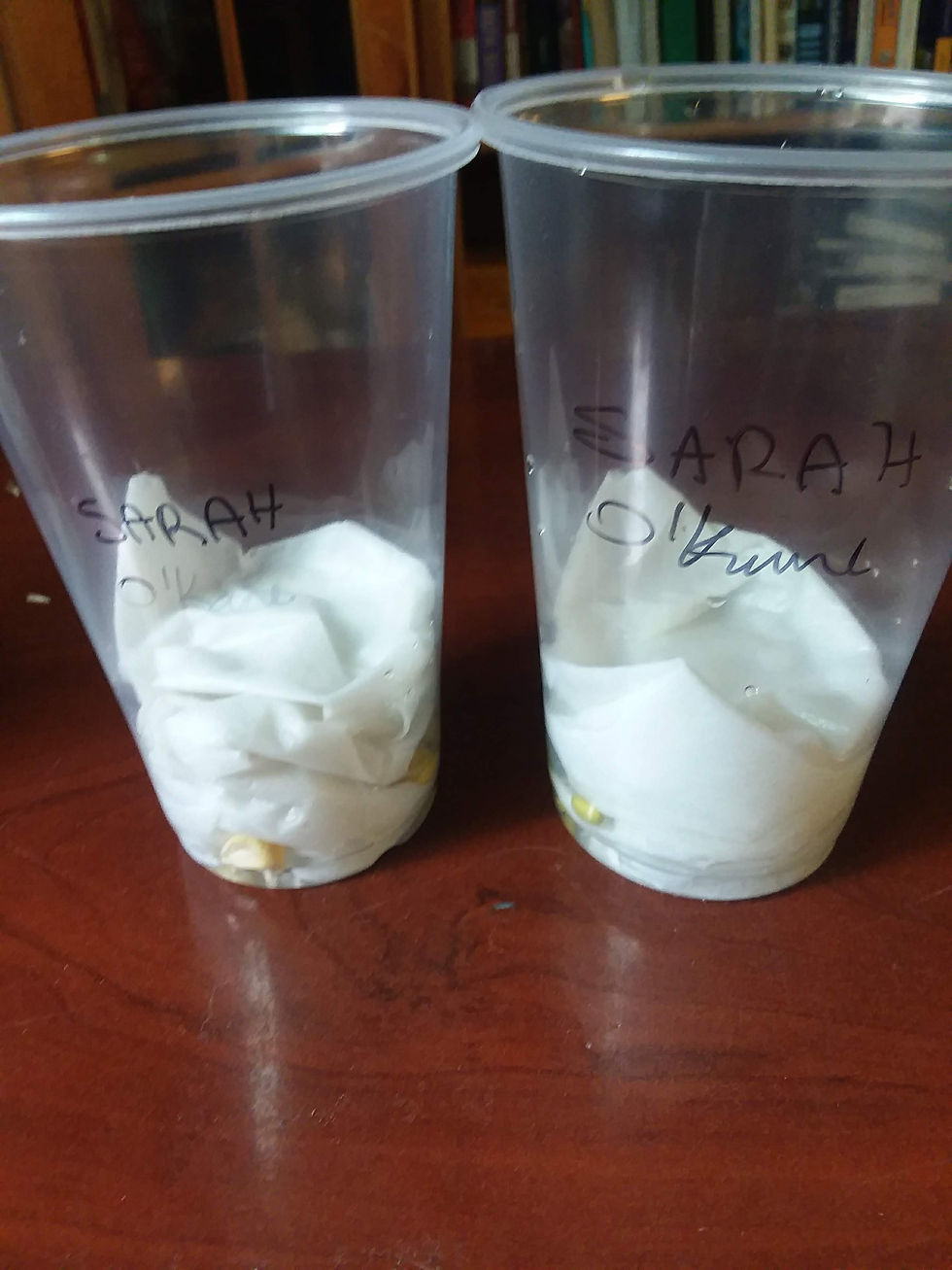
Sarah O'Kane Digital Portfolio

Biology
Mitosis Video
-What is mitosis and when does it occur?
Mitosis is the process that occurs when the cells are splitting
- What are the stages?
Interphase Prophase Prometaphase Metaphase Anaphase Telophase Cytokinesis interphase
-How long do they last? You can explain what you learned about onion root mitosis.
Interphase lasts for 90% of the cells life whereas the process of mitosis only takes up 10%of the cells life span
-How does this relate to the current research we are doing with planarians?
The planarians are actively using mitosis to regenerate their bodies. When they are injured this process appears to speed up so that they can heal faster.
-How does understanding the process of mitosis help us tackle questions about human regeneration?
It gives us a greater insight Into how cells divide as well as being useful for making medical advances by testing the difference between our cells and the stem cells of animals that can regenerate and how this process works. He can also test medical advances on things that regenerate faster.
Hanging Garden Project
Abstract:
As you probably know, oxygen is required for life. So, we are looking at plants that produce more than 5 ml of oxygen per hour, or plants that produce more than 240 ml of oxygen in one day (24 hours). Our goal is to find which plant out the of selected high oxygen plants produces more oxygen than the average plant, to test which of the four plants produces the most oxygen. In our research, we looked at the benefits of having plants indoors and the effects that high oxygen plants have on the environment around them. We also looked at the effects of indoor plants as a group.
Background:
Plants need to go through photosynthesis to produce oxygen. This process requires sunlight, water, and carbohydrates. The carbohydrates are used to create energy to produce oxygen. The oxygen created by plants is essentially a waste product. This waste product is then expelled by the plant’s stomata.¹³ The stoma is a pore looking feature located on the leaves¹⁴.The average house plant produces 5 ml of oxygen per hour², or 240 ml in 24 hours. We also know that high oxygen producing plants have a habit of cleaning the air around them. The snake plant, for example, pulls toxins out of the air to convert into oxygen¹. We will use an air chamber to compare the different amounts of oxygen the plants will produce. This system has the plants in a contained environment that will be the same for each of the plants so that it doesn't sque the data.
Significance and broader impacts:
High oxygen plants not only produce high amounts of oxygen, which is useful for people with difficulty breathing (like those with asthma), but plants that produce more than 240 ml of oxygen over 24 hours also tend to clean toxins out of the air. Some of them are formaldehyde, benzene, and carbon monoxide. Plants that clean the air could prove to be productive in places with higher levels of benzene, formaldehyde, and carbon monoxide in the air. NASA may be able to use these plants in the future for planets with toxic air and/or low oxygen levels. Oxygen levels also tend to improve humans’ psychology. The provision of extra oxygen in space also helps with cognitive functioning and mental health⁴’¹⁰. Plants, therefore, have a positive effect on the psychology of humans, which may help those with mental illnesses, such as depression and anxiety.
Photosynthesis
Lab
Purpose of Experiment:
The purpose of this experiment was so we could see the prosses of photosynthesis taking place in this experiment we also had multiple variables so we could compare many things like the type of leaves., the light. for my data collection, I looked at the white light average.
Results:
In the graph above it's shown not many leaves flouted under white light. The average amount of leave that flouted under whiter light was 0.5900621118 .
Monoct
vs
Dicot




Purpose of experiment: why did we do this?
To see the Structural diffrencre between a Monocot and Dicot.
Predictions: Monocot or Dicot… that is the question.
I predicted that corn was a Monoct and mung bean was a Dicot. I predicted this do to the fact in the vidoe they explained that beans where Diots and the teacher explained that there was one of each kind meaning that the corn had to be Monocot. Then we craked open a corn and a bean confurming my idea base on the inside form of a seed you can tell if it is an dicot or monocot to further are evidence for the bean being a dioct and the corn being a monocot we grow some to see how they sprotued. Sadly after missing a day I came back only to find that my experment had not been doing well so it had been removed.
Observations:
Over time I had noticed that my bean begian to lose skin.
Findings: which is monocot and which is a dicot? Include evidence. Refer back to your initial predictions.
Based on the structural design of the seed a bean is a dicot and a corn is a Monocot. base on the sprutligs of other classmates structural design of there sproutling the bean is a dioct and the corn is a monocot.
Conundrums, limitations, or changes to your experiment:
-
Did your plants drown or thrive against all expectations?
I belive that I may have over water my plants which made then take a longer periode of time to sprout.